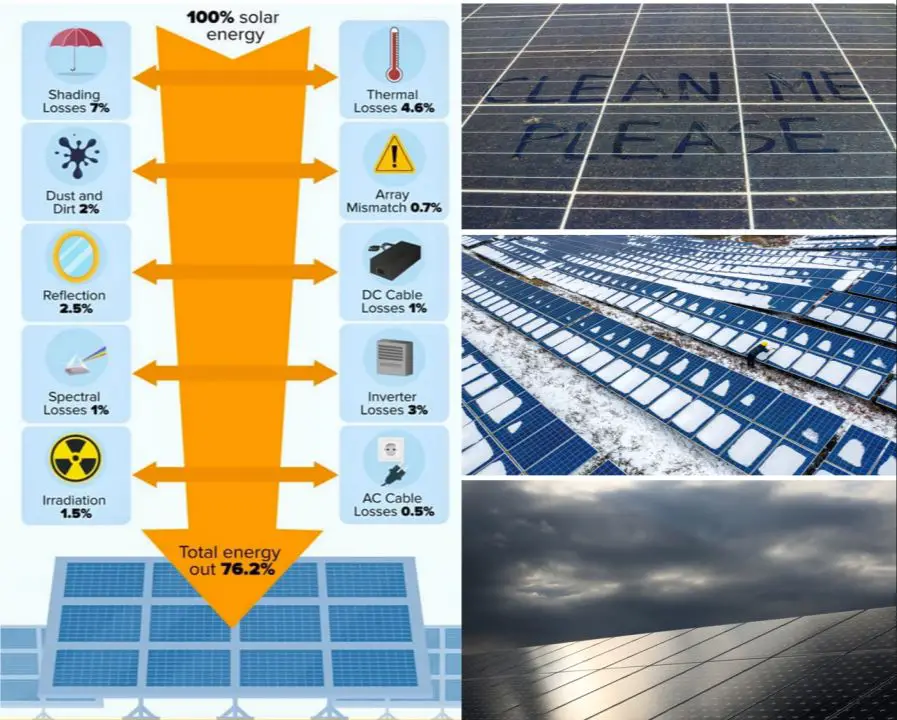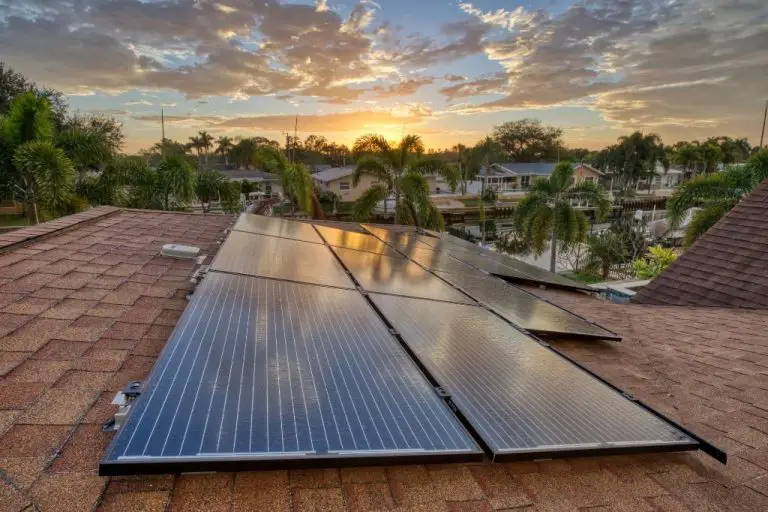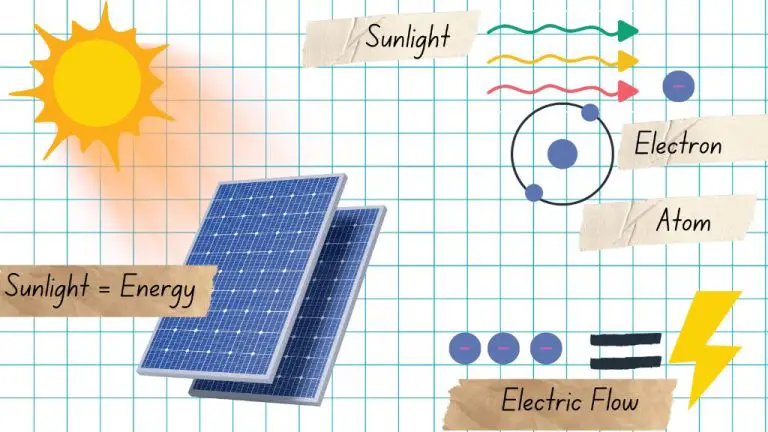How Can We Overcome Solar Energy Limitations?

Solar energy is an important renewable energy source that can help mitigate climate change by reducing greenhouse gas emissions. However, solar power has some limitations such as intermittency and variability. This article explores solutions for overcoming key solar energy limitations so that solar can continue to grow as a sustainable energy source.
Solar energy provides clean, renewable power through the photovoltaic effect, converting sunlight directly into electricity. As countries seek to transition away from fossil fuels, solar PV capacity is expanding rapidly around the world. Yet solar intermittency remains an issue, as solar panels only produce power when the sun is shining. This article will examine strategies like energy storage, efficiency improvements, and supportive policies to address solar power’s drawbacks.
With smart solutions, solar power’s challenges are surmountable. Solar energy holds tremendous potential to supply affordable, low-carbon energy globally. By exploring ways to overcome limitations, solar can play an expanding role in building sustainable energy systems.
Intermittency
One of the main limitations of solar energy is intermittency – solar power can only be generated when the sun is shining (Renewable Energy Intermittency Explained: Challenges, Solutions and Opportunities, 2015). This causes issues for grid stability and reliability, as supply and demand need to be constantly balanced. When solar output decreases due to clouds or nighttime, other power plants need to ramp up to meet demand. Likewise, when solar generation increases, grid operators have to reduce output from other sources to avoid oversupply. This start-stop cycling increases wear and tear on conventional power plants and makes grid management more complex (The Intermittency Challenge with Solar and Wind Is Not Going Away, 2023).
Multiple solutions exist to mitigate solar intermittency challenges. Energy storage using batteries and other technologies can absorb excess solar generation and dispatch power when needed. Demand management through smart devices and rates can shift usage to times of high renewable output. Improved solar forecasting helps grid operators anticipate changes in supply. While no perfect solution exists, combining strategies can significantly reduce the grid impacts of solar intermittency (Impacts of solar intermittency on future photovoltaic reliability, 2020).
Storage Solutions
One of the main challenges with solar energy is that it is intermittent – solar panels only produce energy when the sun is shining. Therefore, storage solutions are critical for enabling wider adoption of solar power.
Batteries are one of the most common ways to store solar energy. Lithium-ion batteries in particular have become popular for home solar systems due to their high efficiency and falling costs. Utility-scale solar farms also often use lithium-ion or flow batteries to store excess energy for later use when solar production is low. According to the Department of Energy, battery storage can help address solar intermittency issues and allow greater grid penetration of renewable energy.[1]
Pumped hydro storage is another mature energy storage technology often used with solar power plants. It involves pumping water uphill into a reservoir when solar production is high, then releasing it through hydro turbines to generate electricity when needed. Similarly, compressed air energy storage uses excess solar power to compress air in underground caverns which is later heated and expanded through a turbine. These mechanical approaches provide large-scale, long-duration energy storage well-suited for the grid.[2]
Thermal storage is another way to hold solar energy, often using molten salts. Solar heat is used to melt the salts, then the salts retain heat that can be used to generate steam for electricity production at night or during cloudy weather. Thermal storage can enable solar thermal power plants to provide dispatchable renewable energy on demand.[3]
Improving Efficiency
One way to maximize solar power output is to improve the efficiency of the photovoltaic cells themselves. Research has led to innovations like thin-film solar cells which use layers of semiconductor material only a few micrometers thick. This allows the cells to absorb more sunlight as it passes through each layer 1. Multijunction photovoltaic cells with multiple semiconductor layers can achieve higher efficiencies by capturing more of the solar spectrum.
Solar tracking systems can also boost efficiency by moving panels to follow the sun’s path across the sky. This keeps panels perpendicular to the light, increasing energy capture. Single-axis trackers rotate on one axis and can raise output by about 30%. More advanced dual-axis trackers can lift production by around 40% 2.
Hybrid systems that combine photovoltaic and solar thermal technology on the same panels can utilize both electricity and heat from the sun’s rays. The thermal component uses the infrared part of the spectrum, while the PV part captures other wavelengths. This complementary approach extracts more overall energy from each square meter of solar panel 3.
Demand Management
One way to help overcome solar energy limitations is through demand management. This involves strategies to shift energy usage to times when solar production is highest. Time of use pricing can incentivize consumers to shift demand by charging lower rates during peak solar production hours (EnergySentry.com). Net metering policies that provide bill credits for excess solar energy fed back into the grid also encourage shifting demand. Forecasting solar energy production and coordinating with grid operators can optimize demand shifting as well (SRPnet.com).
By aligning demand with solar energy generation throughout the day, less solar energy is wasted. Demand management enables solar to reliably contribute a larger share of overall energy production. With smart coordination, solar’s intermittent nature can be overcome.
Reducing Soft Costs
Soft costs like permitting, financing, and installation make up a significant portion of the total price tag for solar power. According to the U.S. Department of Energy, soft costs can account for up to 64% of the total price of residential solar in some markets (Source: https://www.energy.gov/eere/solar/solar-soft-costs-basics). Reducing these costs could dramatically accelerate solar adoption.
There are several ways to lower soft costs:
– Streamlining permitting and procurement processes through online platforms can simplify and automate solar permitting and financing applications. This eliminates paperwork and speeds up approvals (Source: https://aurorasolar.com/blog/what-are-soft-costs-the-frontier-of-solar-cost-reductions/).
– New financing and business models like solar leasing and community solar help expand access to solar power. These innovative models allow households and businesses to go solar with little or no upfront costs (Source: https://www.naseo.org/issues/solar/soft-costs).
– Investing in workforce training and education grows a skilled solar labor force. This ensures quality installations and keeps pace with increasing demand (Source: https://www.naseo.org/issues/solar/soft-costs).
Supportive Policies
Implementing supportive policies at the federal, state, and local levels can help overcome limitations associated with solar energy and facilitate its wider adoption. Key policies that experts recommend include:
Renewable portfolio standards (RPS) require utilities to source a certain percentage of their electricity from renewable sources like solar. RPS policies have been implemented in over 25 states and help drive solar deployment by creating guaranteed demand. According to the EPA, state RPS policies are among the most important drivers for renewable energy growth in the U.S. (https://www.epa.gov/green-power-markets/policies-and-regulations).
Rebates and tax credits like the federal investment tax credit (ITC) lower the upfront costs associated with solar installation for homeowners and businesses. These financial incentives make solar energy more affordable and accessible. Studies show the ITC has played a major role in the rapid growth of solar energy in the U.S. by stimulating private investment (cite url here).
Phasing out fossil fuel subsidies and implementing carbon pricing policies help level the playing field for solar energy to compete with conventional energy sources. According to the SEIA, removing distorting subsidies for fossil fuels would lead to greater solar deployment and emissions reductions (https://www.seia.org/initiatives/federal-state-regulatory-policy).
Grid Modernization
Modernizing and upgrading the electricity grid is critical for overcoming the limitations of solar energy. By transitioning to a smarter, more flexible grid, we can better manage the variability of solar generation. Key aspects of grid modernization include:
Smart grids utilize advanced sensors, controls, and analytics to monitor the grid in real-time. This allows utilities to quickly detect and respond to changes in solar output. Smart grids also enable better integration of energy storage to smooth solar’s variability. The Grid Resilience and Innovation Partnerships program is funding smart grid upgrades that will lead to more reliable electric service.
Microgrids are self-contained local energy networks that can disconnect from the main grid and operate autonomously. This makes them more resilient during grid disruptions. Microgrids with solar and storage can provide backup power if the main grid goes down. They also allow communities and campuses to optimize local solar resources.
Transitioning to direct current (DC) networks reduces the need to convert between AC and DC. This improves efficiency, especially when integrating solar PV which natively generates DC power. DC networks are well-suited for microgrids and can enable optimal use of batteries and other DC-compatible technologies. Modernizing distribution networks with DC architecture increases solar hosting capacity.
Streamlining interconnection processes and upgrading transmission infrastructure allows more solar to be integrated onto the grid. Improving grid flexibility through advanced power electronics and controllable devices also facilitates solar integration. DOE’s Grid Modernization Initiative supports these types of grid enhancements.
Deploying battery storage at scale is critical for managing solar’s daily and seasonal variability. Batteries can store excess solar generation during midday peaks and dispatch power in the evening when solar production declines. Grid-scale storage also shifts solar energy from summer to winter. Advanced energy management systems optimize storage operations and integration.
Conclusion
In summary, there are various solutions to overcoming the limitations of solar energy, including energy storage, improving efficiency, demand management, reducing soft costs, grid modernization, and implementing supportive policies. With focused efforts on these solutions, we can build a renewable grid powered predominantly by solar energy.
The future looks bright for widespread solar adoption. As costs continue to fall and technology improves, solar will reach price parity with fossil fuels across most regions. Integrating massive amounts of solar power is feasible with grid upgrades, demand response technology, energy storage, and smart inverters. The grid of the future will seamlessly incorporate solar, storage, and other renewables to provide reliable and affordable carbon-free energy.
To fully unlock solar’s potential, governments and businesses must prioritize investments and policies supportive of solar and clean energy. I encourage readers to contact their elected representatives and advocate for extending tax credits, updating building codes to spur rooftop solar installations, investing in transmission lines, and funding research and development. With your support, we can accelerate the transition to a 100% clean energy economy powered by the limitless potential of the sun.
Further Reading
For more information on overcoming solar energy limitations, check out these additional resources:
Energy Storage Technology and Cost Characterization Report – U.S. Department of Energy report analyzing the costs and capabilities of various energy storage technologies.
An overview of challenges, opportunities and recent developments in photovoltaic solar energy conversion – Review paper in Renewable and Sustainable Energy Reviews on improving PV efficiency and reducing costs.
Solar in the Southeast – Analysis by NREL on the benefits and opportunities of increasing solar deployment in the Southeastern U.S.
Real-Time Building Energy Management – NREL study on strategies to optimize building energy use and integrate renewable energy.
Review of government policies for renewable heating and cooling in buildings – Review of policies worldwide aimed at increasing renewable heating and cooling technology adoption.







